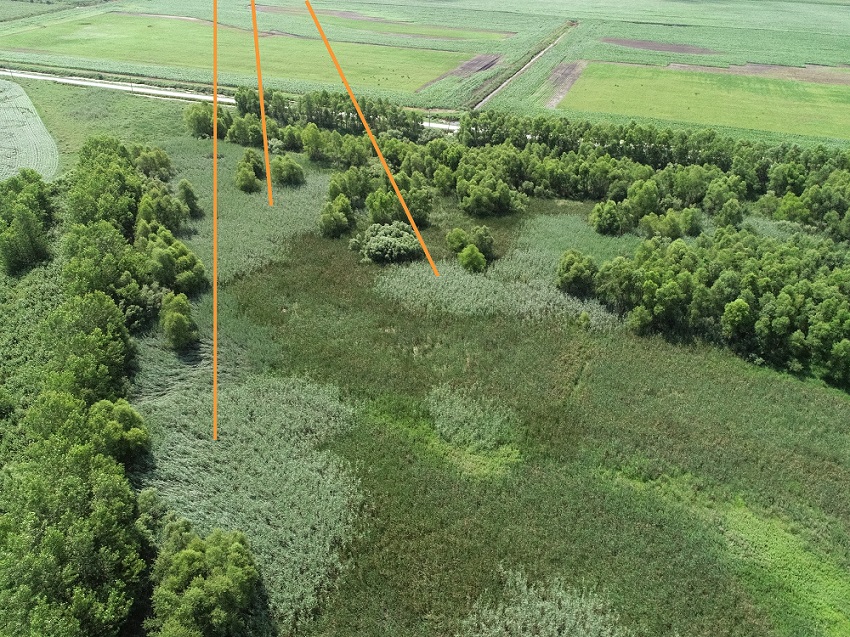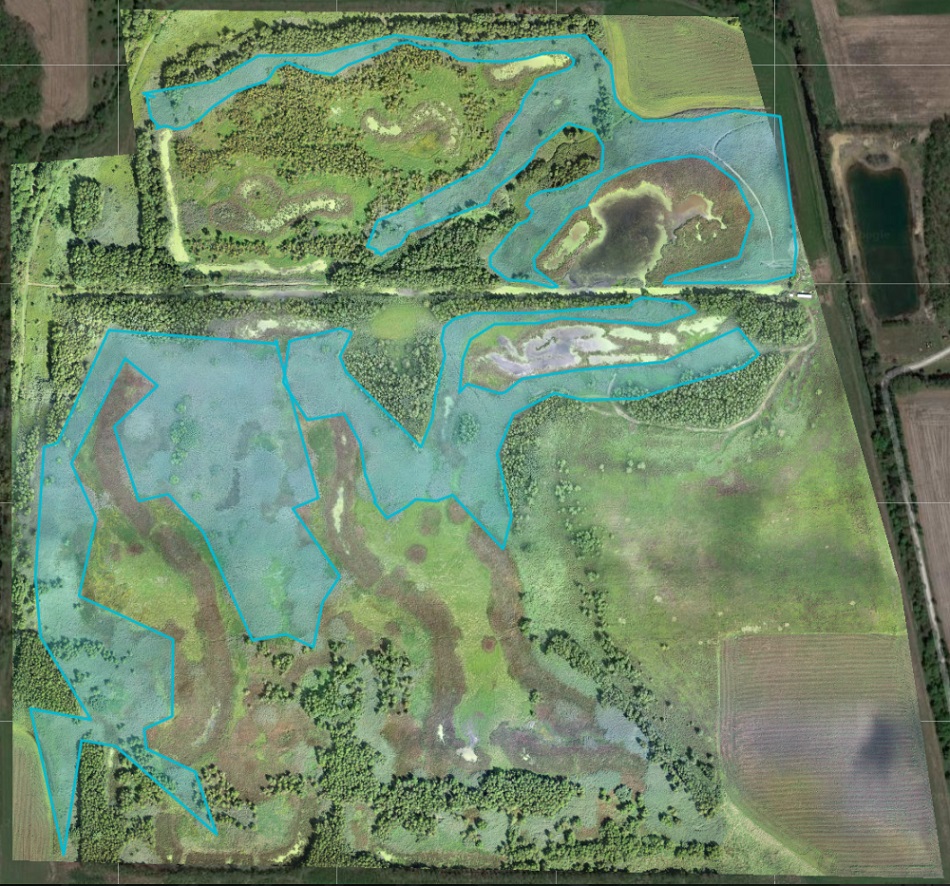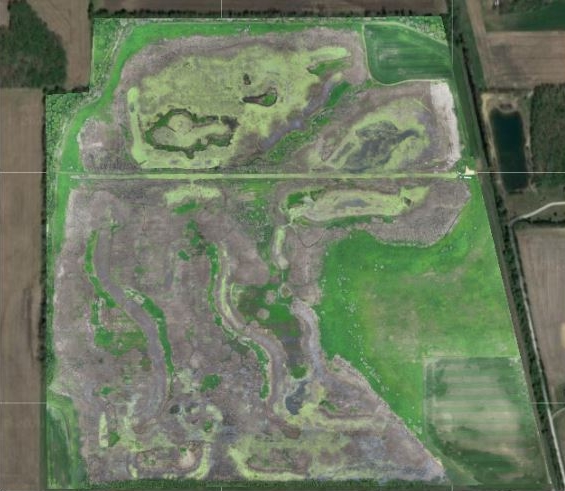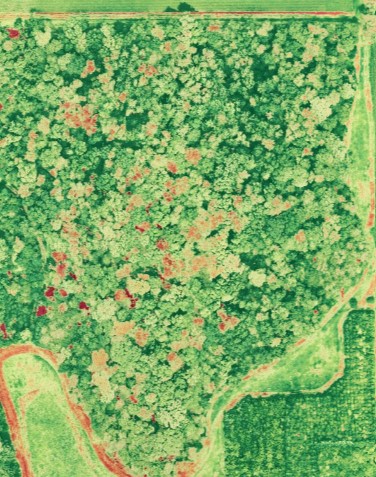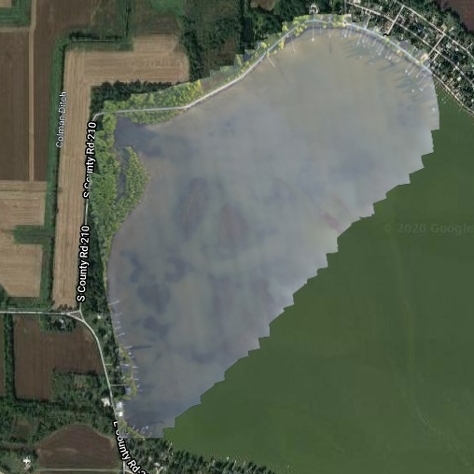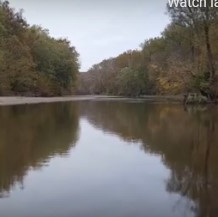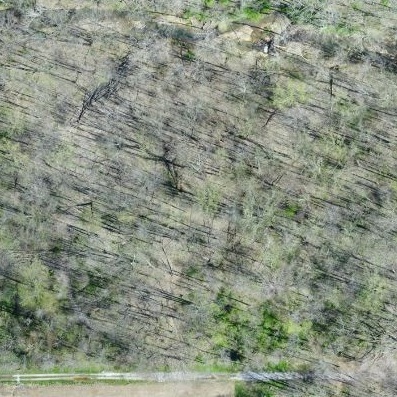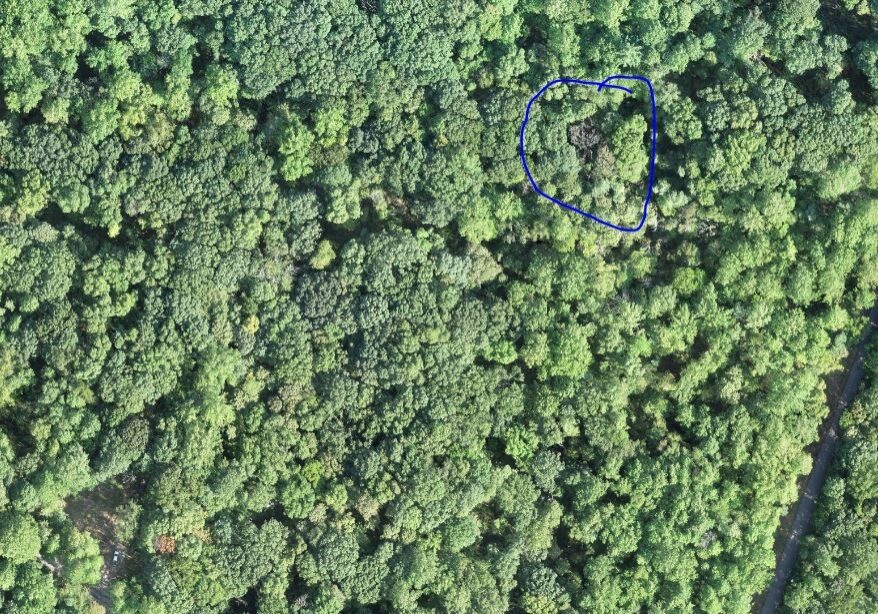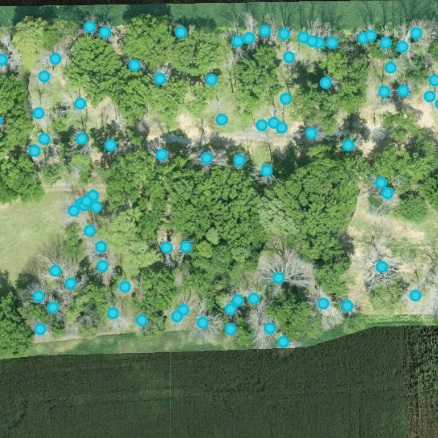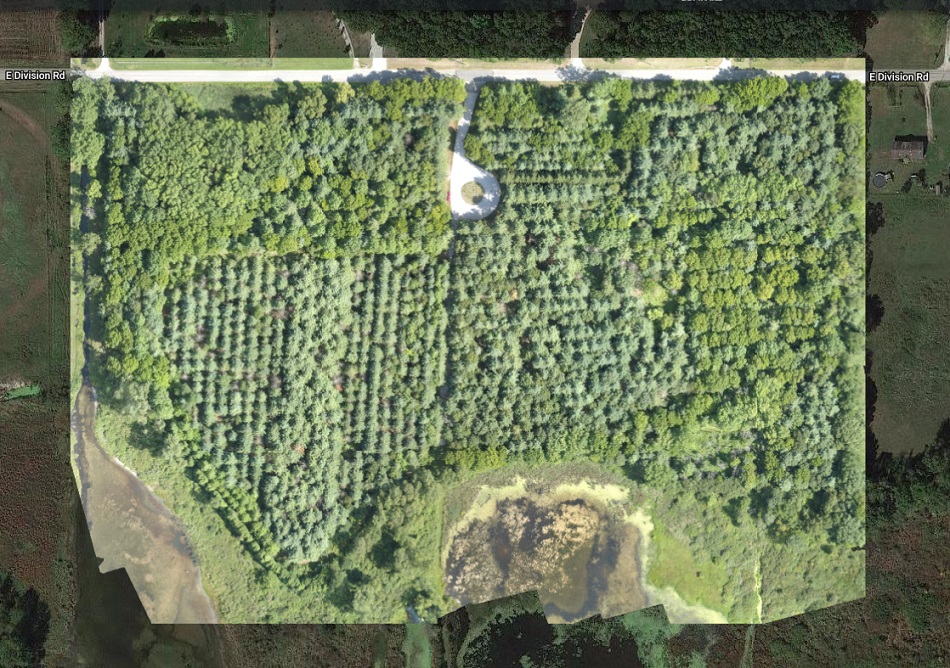Invasive weed: common reed
Flown by Bryan Overstreet, Agriculture & Natural Resource Educator, Purdue Extension – Jasper County
Common reed (Phragmites australis) is an Indiana native, but invasive, weed. It’s especially problematic in natural areas and wetlands where it spreads rapidly, pushing out other native plants. Here we map a wetland to identify and eradicate areas of common reed. A stitched image of the wetland allows conservationists to target the weed, quantify areas of most concern and remove the species.
The map on the far right shows the entire 193-acre wetland with the greatest areas of common reed outlined in blue. The invasive weed totals 39.4 acres, which doesn’t include the entire population but helps concentrate on initial removal efforts.
Lighter colored vegetation = Phragmites australis

